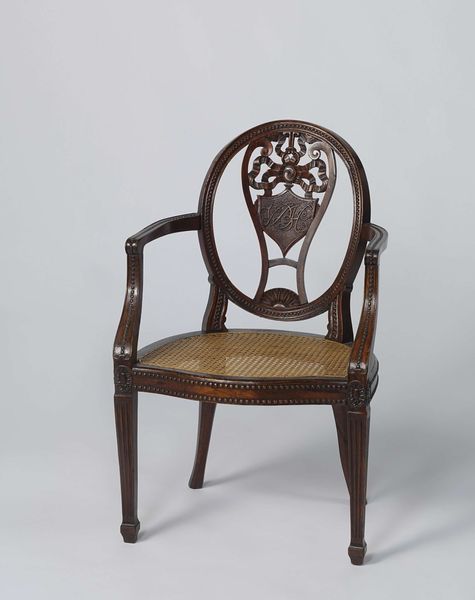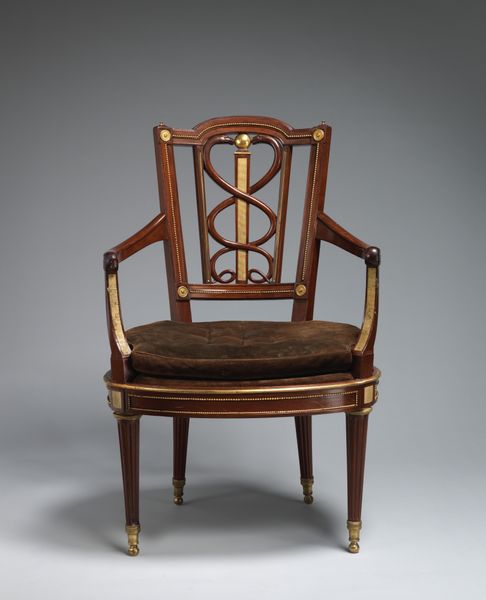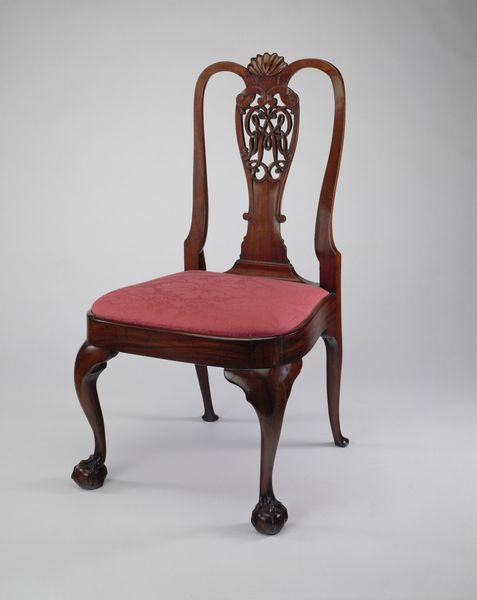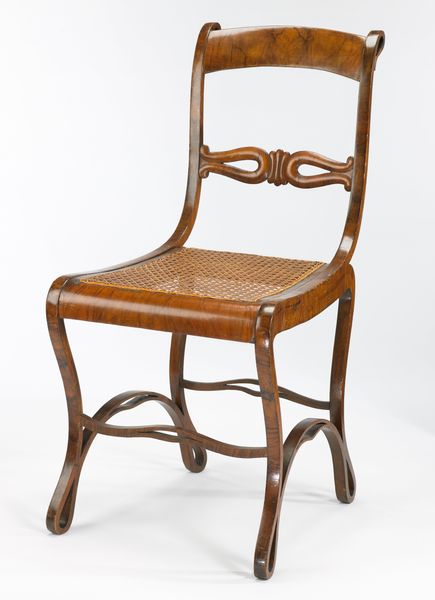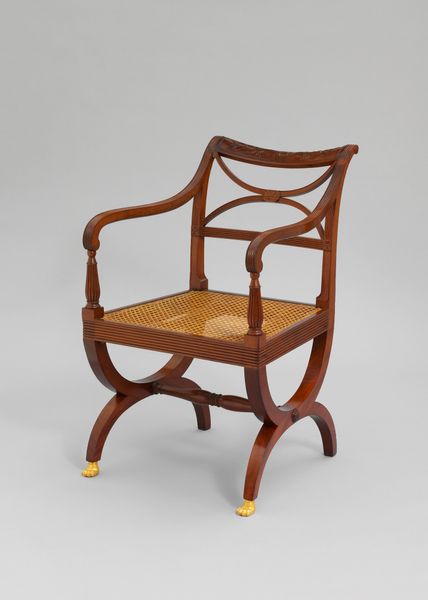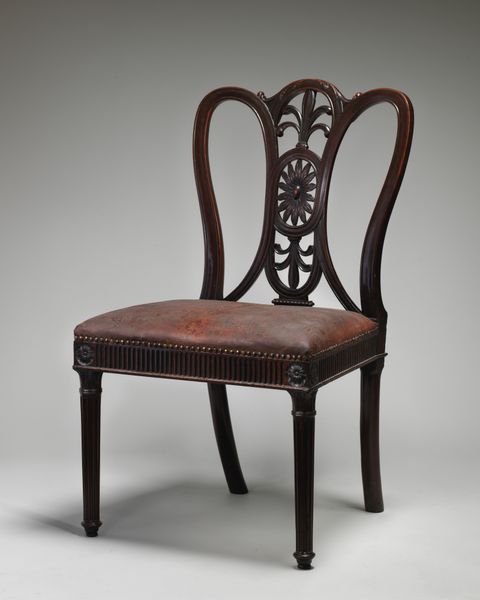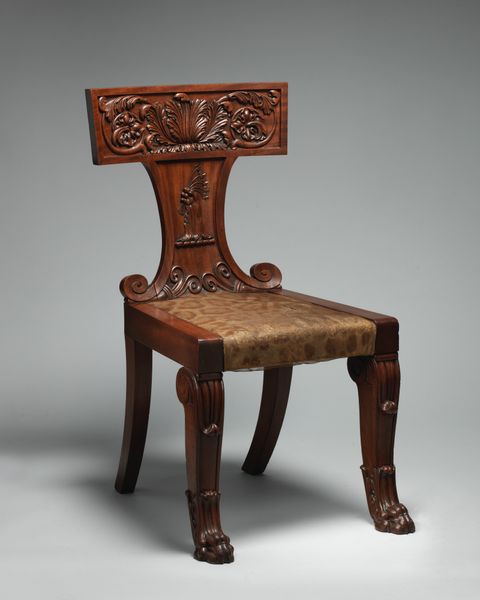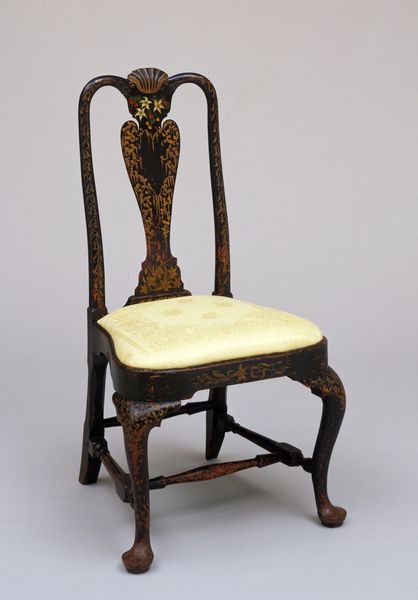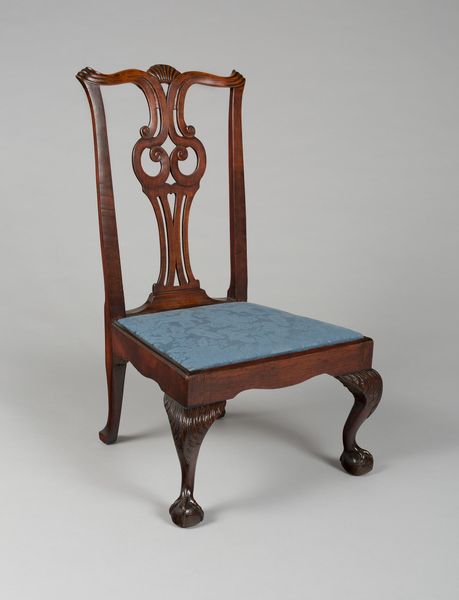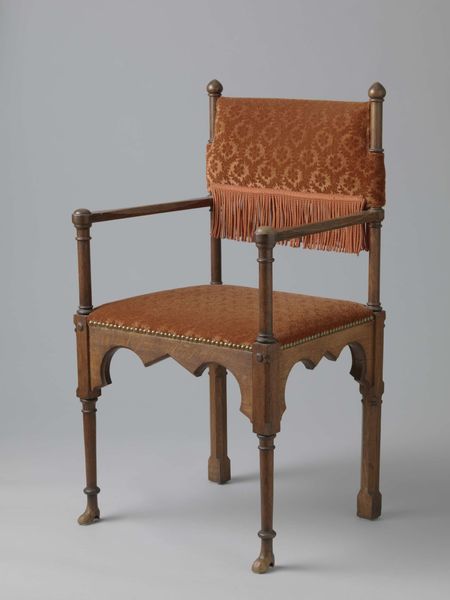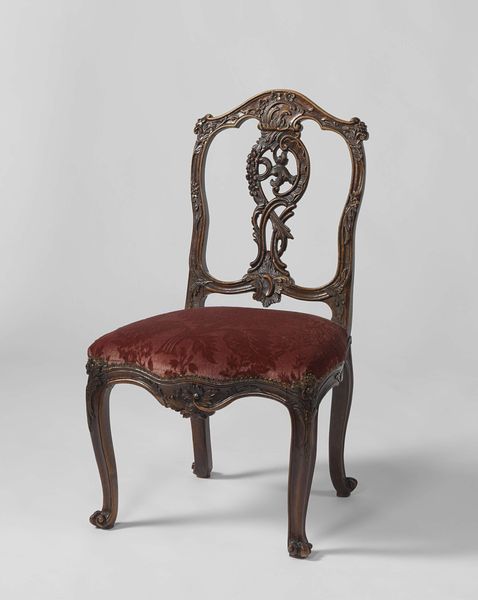
mixed-media, carving, wood, pendant
#
neoclacissism
#
byzantine-art
#
mixed-media
#
carving
#
furniture
#
romanticism
#
wood
#
decorative-art
#
pendant
Dimensions: 32 3/4 x 17 x 19 5/8 in. (83.2 x 43.2 x 49.8 cm)
Copyright: Public Domain
Curator: Ah, yes, here we have Duncan Phyfe's Side Chair, crafted between 1812 and 1815. It's a remarkable example of neoclassical furniture, currently residing at the Metropolitan Museum of Art. Editor: It appears delicate yet imposing, wouldn’t you say? The curve of the legs contrasted with that ornate top feels rather opulent. Curator: Precisely! Phyfe was known for his refined interpretations of classical forms. Observe the graceful lines, the lyre motif—hallmarks of neoclassical design. Notice how the carved details are integrated within the framework. Editor: I can’t help but think of the lives supported – or perhaps more aptly, those excluded – by such a luxurious object. What were the societal structures at play that allowed for such extravagant craftsmanship, given that it uses mixed-media? How would that ornate decoration, that "decorative art," have reflected class distinctions, not just aesthetic preference, do you suppose? Curator: A valid point, of course, though I am focused on the aesthetic achievement, its form as it speaks to its function. Editor: Agreed, but is not the function of such items inextricably intertwined with the messages they communicate within the historical moment of their production? Curator: Certainly, a valid argument; however, one might simply see an integration of Greek and Roman ideals into American craftsmanship and form. The choice of material, mixed woods – what can it suggest about Phyfe's artistic intent? Editor: I lean towards this chair acting as an emblem of wealth. A visual declaration, a display of power enacted in domestic space. To see a work so elegantly designed from the period 1812-1815 forces consideration of that period’s classism, slavery and colonialism as inherently imbricated. Curator: So, from structure and composition to symbolism of status and luxury... Food for thought. Editor: Precisely. And that is how this wooden seat now serves a more expansive view into early 19th-century America and beyond.
Comments
No comments
Be the first to comment and join the conversation on the ultimate creative platform.
